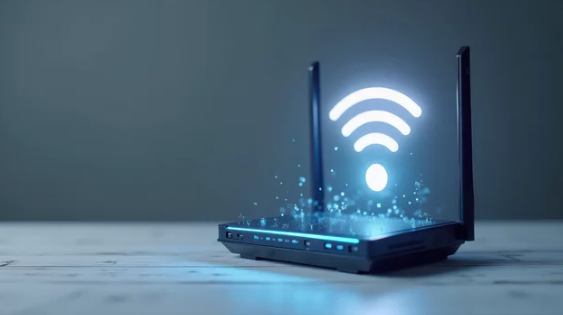Smartphone Wi-Fi problems can be frustrating and disruptive. When your phone refuses to connect to networks, disconnects frequently, or shows a grayed-out Wi-Fi toggle, the issue may lie in the device’s Wi-Fi hardware rather than your router.
This complete guide will walk you through diagnosing Wi-Fi hardware issues on both iPhone and Samsung smartphones. You’ll learn how to identify whether the problem is caused by the Wi-Fi chip (IC), antenna, or software, and how to determine the right repair path.
Understanding Smartphone Wi-Fi Hardware
Your phone’s Wi-Fi system is more complex than it seems. It relies on three main components:
- Wi-Fi Chip (IC): Handles wireless communication and processes network signals.
- Wi-Fi Antenna: Captures and transmits signals to and from your router.
- Software/Firmware: Controls the Wi-Fi chip and interprets data for your operating system.
Damage to any of these components can result in connectivity issues. Common causes include overheating, drops, liquid damage, or software conflicts.
Step 1: Recognize the Symptoms of Wi-Fi Hardware Failure
Identifying symptoms accurately is the first step in diagnosing hardware problems.
| Symptom | Possible Hardware Cause |
|---|---|
| Wi-Fi toggle grayed out | Faulty Wi-Fi IC |
| No networks detected | Damaged antenna or IC failure |
| Weak or intermittent signal | Loose antenna or partial IC malfunction |
| Wi-Fi works after reboot but fails later | Heat-sensitive IC solder joints |
| Bluetooth also weak | Shared antenna or IC problem |
Accurate symptom recognition helps distinguish between software and hardware problems.
Step 2: Rule Out Software Issues First
Before opening your phone, perform software diagnostics:
- Restart Your Device: Clears temporary network errors.
- Reset Network Settings:
- Android: Settings → General Management → Reset → Reset Network Settings
- iPhone: Settings → General → Transfer or Reset iPhone → Reset → Reset Network Settings
- Update Firmware: Install the latest operating system updates to fix Wi-Fi drivers.
- Safe Mode (Android): Boot to Safe Mode to see if third-party apps are causing Wi-Fi conflicts.
If Wi-Fi still fails after these steps, the issue is likely hardware-related.
Step 3: Test the Wi-Fi Chip (IC)
The Wi-Fi IC is the core of your wireless connectivity. Malfunctions can prevent network detection entirely.
Samsung Diagnostic
- Dial
*#*#4636#*#*→ Wi-Fi Information → Wi-Fi Status - If “Unavailable” or “Error” appears, the IC may be failing.
iPhone Diagnostic
- Go to Settings → Privacy → Analytics & Improvements → Analytics Data
- Look for repeated wifid crash logs, which indicate IC malfunction.
Step 4: Inspect the Wi-Fi Antenna
A damaged or disconnected antenna often causes weak signals or prevents network detection.
Samsung DIY Inspection
- Power off the device.
- Remove the back cover using a heat gun if needed.
- Locate the Wi-Fi antenna connector near the motherboard.
- Ensure the connector is properly seated.
- Reassemble and test Wi-Fi.
iPhone Antenna
iPhone antennas are integrated into the frame, making DIY repairs risky. Professional inspection is recommended.
Step 5: Cooling the Wi-Fi Chip
Some IC issues are heat-sensitive due to solder joint cracks. Temporary Wi-Fi restoration can sometimes be achieved by cooling the device.
Cooling Steps
- Power off the phone and remove the case.
- Place the device in a cool, dry environment for 15–20 minutes.
- Power on and test Wi-Fi.
If Wi-Fi works temporarily, the IC likely needs professional reflowing or replacement.
Step 6: Professional Wi-Fi Hardware Repair
If software fixes, antenna reconnections, and cooling do not resolve the problem, professional repair is required.
Repair Options
- IC Reballing or Replacement: Microsoldering to restore or replace the Wi-Fi chip.
- Antenna Replacement: Installing a new antenna if the original is damaged or corroded.
- Full Board Diagnostics: Ensures all components work correctly before reassembly.
⚠️ DIY IC repair without proper tools can permanently damage your phone.
Step 7: Temporary Connectivity Solutions
While waiting for repairs, you can maintain internet access using:
- Mobile Data: LTE/5G connections.
- USB Tethering: Share data with a computer.
- Bluetooth Tethering or Hotspot: Use another device to provide temporary Wi-Fi access.
These methods allow continued phone usage until the hardware is fixed.
Step 8: Prevent Future Wi-Fi Hardware Issues
To reduce the risk of future Wi-Fi module problems:
- Avoid drops and physical impacts.
- Keep the phone dry to prevent corrosion.
- Avoid prolonged overheating.
- Use certified chargers to prevent voltage spikes.
- Update software regularly for driver stability.
Step 9: When to Repair vs Replace
| Scenario | Recommended Action |
|---|---|
| Loose antenna or minor IC solder crack | Repair |
| Physical damage to IC or antenna | Replacement |
| Multiple hardware failures | Replacement |
| Device under warranty | Seek professional repair or OEM replacement |
Repair is usually faster and more cost-effective for minor issues, while replacement may be required for severe damage.
Final Thoughts
Diagnosing Wi-Fi hardware issues requires careful observation, software checks, and, in some cases, professional intervention.
- Start with software and network troubleshooting.
- Test the Wi-Fi IC and antenna to identify hardware faults.
- Use temporary solutions while planning repairs.
- Consider repair for minor issues and replacement for severe damage.
Following this complete guide ensures that your iPhone or Samsung device regains reliable Wi-Fi connectivity, keeping your smartphone functional and connected for years.
Also Read :
